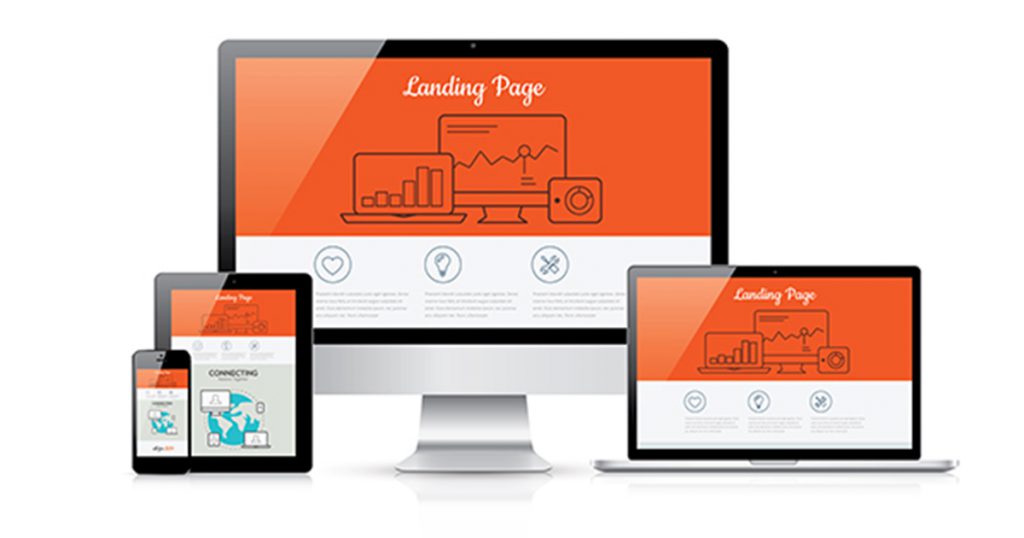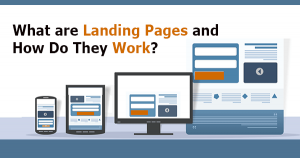A landing page is a page on your site designed to convert visitors into leads. This is different from other pages on your website, as it follows both of these criteria.
- It has a form that allows you to capture a visitor’s information in exchange for the desired offer.
- The sole purpose of a landing page is to turn visitors into leads.

How Do Landing Pages Work?
- A person sees a call to action and ends up on a landing page with a form.
- The person fills out a form, which converts them from a visitor into a lead.
- The information from the form fields is then stored in your leads database.
- You market to the contact or lead based on what you know about them.
If you use marketing automation tools like HubSpot or Marketo, you will be able to see what offers lead to converted leads, when they convert, and what other interactions they have on your site. This information will help you nurture this goal in a more targeted way so that you can decide which marketing action is best suited to take.
A visitor will fill out the form on the landing page because they believe that the content they are accessing will be valuable to them.
Building a Great Landing Page:
Once you have the background research done, it’s time to put the landing page together.
1. Create a Compelling Headline:
You need to develop a title that will quickly grab a visitor’s attention and make them want to read. When they arrive on your landing page, so it is the first thing, and you do not want to end it.
2. Efficiently Convey the Value of Your Offer:
Consenting and effectively accepting the value of an offer is important for the development of your landing page. If you don’t do it successfully, you risk losing that conversion, Usually, it only takes one “blink” to decide whether or not they want to stay on your landing page.
3. Include Bullet Points:
For whatever reason, we humans like to mix things up, and we pay less attention to things like landing pages.
Write a short summary of the proposal, and at the bottom of the summary, list the bullet points a visitor can expect to download by reading the material. To engage your readers, avoid writing long paragraphs on your landing page.

4. Build the Form:
When you create a form for your landing page, be careful with the number of form fields you include.
5. Remove Site Navigation:
When creating your landing page, you want to remove an opportunity for your visitor to leave the page. By removing site navigation from your landing page, you allow your visitor to focus only on the content, rather than being distracted by other enticing links on your site.
6. Insert Images:
Including a relevant and attractive image on your landing page to pull the visitor. People are more likely to remain on the page if a panoramic image is present.
7. Add Social Sharing Icons:
Although you should remove all navigation from the landing page, it is important to include a social sharing icon so that people can share the landing page with others on other social platforms.
8. Provide Testimonials When Relevant:
These days, people are always looking at reviews of products and services before making a purchase, and the same can apply to landing pages.
Landing page Benefits:
- Landing pages may increase conversions.
- It can provide additional information to your target audience.
- They can grow your email subscriber list.
- Landing pages are testable.
- It allows you to measure metrics directly tied to business goals.
- Landing pages add context to your offer.
- Landing pages increase brand value and help make a good first impression.
Conclusion:
Landing pages are a great and terrifying way of converting targeted traffic into sales. While it is true that you can also use the landing pages without paid ads, it is best used with paid ads where you are able to target specific needs that your product.

I’m a DevOps/SRE/DevSecOps/Cloud Expert passionate about sharing knowledge and experiences. I am working at Cotocus. I blog tech insights at DevOps School, travel stories at Holiday Landmark, stock market tips at Stocks Mantra, health and fitness guidance at My Medic Plus, product reviews at I reviewed , and SEO strategies at Wizbrand.
Please find my social handles as below;
Rajesh Kumar Personal Website
Rajesh Kumar at YOUTUBE
Rajesh Kumar at INSTAGRAM
Rajesh Kumar at X
Rajesh Kumar at FACEBOOK
Rajesh Kumar at LINKEDIN
Rajesh Kumar at PINTEREST
Rajesh Kumar at QUORA
Rajesh Kumar at WIZBRAND
